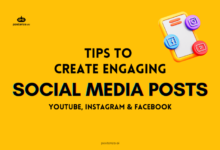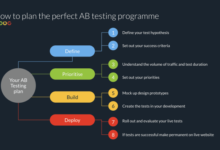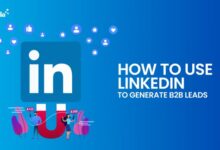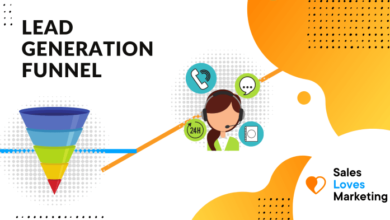
Enhancing email marketing campaigns with segmentation is a powerful strategy that can significantly boost engagement and personalization. By tailoring content to specific audience segments, businesses can improve open rates, click-through rates, and overall customer satisfaction.
This article will delve into the various benefits, strategies, and implementation techniques of segmentation in email marketing, providing valuable insights for optimizing your campaigns.
Benefits of Email Marketing Segmentation
Segmentation plays a crucial role in enhancing the effectiveness of email marketing campaigns by allowing businesses to target specific groups of customers with tailored content. This personalized approach can lead to higher open rates, click-through rates, and ultimately, improved conversion rates.
Higher Open Rates
- Segmenting email lists based on demographics, behavior, or purchase history can result in more relevant content being delivered to recipients.
- By sending targeted emails to specific segments, businesses can capture the attention of recipients who are more likely to engage with the content.
- Personalized subject lines and content based on segmentation can intrigue recipients, leading to a higher likelihood of them opening the email.
Increased Click-Through Rates
- Segmentation allows businesses to send emails with content that is more aligned with the interests and preferences of each segment.
- By delivering targeted content, businesses can improve the chances of recipients clicking on links within the email to learn more or make a purchase.
- Customized calls-to-action based on segmentation can prompt recipients to take the desired action, resulting in higher click-through rates.
Enhanced Customer Engagement
- Personalizing emails through segmentation shows customers that a business understands their needs and preferences, fostering a deeper connection.
- By delivering relevant content to specific segments, businesses can establish trust and credibility with their audience, leading to increased engagement.
- Segmentation allows businesses to tailor promotions, recommendations, and offers to individual segments, making the content more compelling and engaging for recipients.
Types of Segmentation Strategies
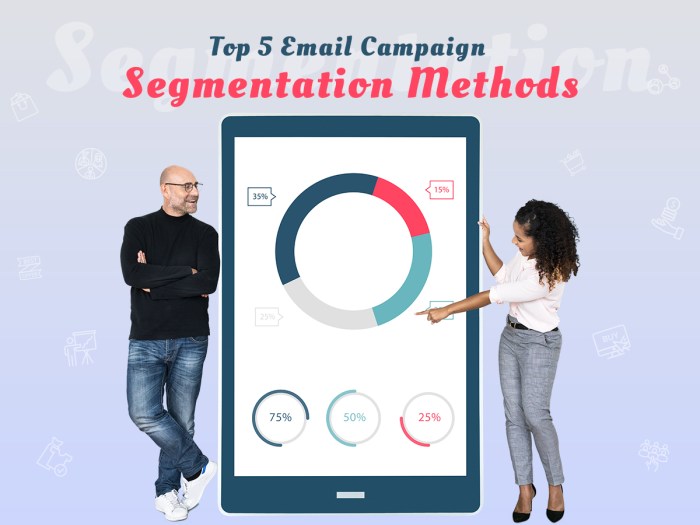
Demographic segmentation involves dividing the market based on variables such as age, gender, income, occupation, education, and more. In email marketing, demographic segmentation allows businesses to tailor their messages to specific groups based on these characteristics, leading to more personalized and targeted campaigns.
Demographic Segmentation in Email Marketing
- Age: Sending different content to younger audiences compared to older demographics.
- Gender: Tailoring messages to resonate with specific genders.
- Income: Offering promotions or products based on income levels.
- Education: Crafting emails that appeal to varying education levels.
Behavioral segmentation focuses on dividing customers based on their actions, such as purchase history, website interactions, email engagement, and more. By analyzing behaviors, businesses can send relevant content to different segments, increasing the likelihood of conversions and engagement.
Behavioral Segmentation in Email Marketing, Enhancing email marketing campaigns with segmentation
- Purchase history: Sending related product recommendations or promotions based on past purchases.
- Email engagement: Segmenting subscribers based on their interaction with previous emails to send targeted content.
- Website interactions: Tailoring emails based on the pages visited or actions taken on the website.
- Preferences: Sending personalized content based on subscribers’ preferences and interests.
Geographic segmentation involves dividing the market based on location, such as country, region, city, or zip code. This strategy allows businesses to send localized content, promotions, and offers to specific locations, ensuring relevancy and increasing the chances of engagement.
Geographic Segmentation in Email Marketing
- Country: Customizing emails based on cultural differences or specific holidays in different countries.
- Region: Sending promotions based on weather conditions or events in a particular region.
- City: Tailoring messages to highlight local events or store openings in specific cities.
- Zip code: Offering location-based discounts or promotions to subscribers in a particular area.
Implementing Segmentation in Email Campaigns: Enhancing Email Marketing Campaigns With Segmentation
Implementing segmentation in email campaigns is crucial for maximizing the effectiveness of your marketing efforts. By dividing your email list into smaller, more targeted segments, you can deliver personalized content that resonates with your subscribers. Here are some best practices for implementing segmentation in your email campaigns:
Collecting Data for Segmentation
- Utilize sign-up forms: Include fields on your sign-up forms to gather information such as demographics, preferences, and interests.
- Track user interactions: Monitor how subscribers engage with your emails, website, and other content to gather valuable data for segmentation.
- Use surveys: Send out surveys to collect feedback directly from subscribers about their preferences and interests.
Creating Segments based on Subscriber Behavior and Preferences
- Engagement levels: Segment subscribers based on their level of engagement with your emails, such as open rates, click-through rates, and conversions.
- Preferences: Create segments based on subscriber preferences, such as content topics, product interests, or communication frequency.
- Purchase history: Segment subscribers based on their past purchase behavior to tailor promotions and recommendations accordingly.
Automating the Segmentation Process
- Utilize marketing automation tools: Implement automation tools that can analyze subscriber data and automatically segment your email list based on predefined criteria.
- Set up triggers: Create triggers based on subscriber actions, such as website visits or email interactions, to automatically update segments in real-time.
- A/B testing: Use A/B testing to refine your segmentation strategy and ensure that your messages are reaching the right audience effectively.
Personalization Techniques with Segmentation

Personalization plays a crucial role in email marketing campaigns as it allows businesses to tailor their content to specific segments of their audience, increasing engagement and conversion rates. By leveraging segmentation, marketers can create more relevant and targeted messages that resonate with recipients on a personal level.
Dynamic Content Customization
Dynamic content customization involves creating different versions of an email campaign based on segmentation criteria such as demographics, past purchase behavior, or engagement history. This allows marketers to deliver highly personalized content that is more likely to capture the attention of recipients and drive desired actions.
- Customizing product recommendations based on past purchases or browsing behavior.
- Personalizing subject lines and email copy to resonate with specific segments.
- Tailoring visuals and design elements to match the preferences of different audience groups.
A/B Testing for Optimization
A/B testing is a valuable strategy that can be used to optimize content for segmented audiences by testing different variations of an email campaign to determine which performs better with specific segments. This allows marketers to make data-driven decisions and refine their messaging to maximize engagement and conversions.
- Testing different subject lines, calls to action, or visuals to see which resonates best with each segment.
- Experimenting with email send times or frequency to identify the most effective cadence for different audience groups.
- Measuring key performance indicators like open rates, click-through rates, and conversion rates to determine the impact of A/B testing on campaign success.
Role of AI and Machine Learning
AI and machine learning technologies play a significant role in enhancing personalization through segmentation by analyzing vast amounts of data to identify patterns and trends that can inform content customization strategies. These technologies enable marketers to automate the process of personalization and deliver highly relevant content at scale.
- Utilizing AI algorithms to predict customer preferences and behavior, enabling targeted content recommendations.
- Implementing machine learning models to segment audiences based on predictive analytics, optimizing campaign performance.
- Leveraging AI-powered tools for real-time personalization, delivering dynamic content based on user interactions and preferences.
Last Recap
In conclusion, leveraging segmentation in email marketing campaigns is a game-changer for businesses looking to enhance their outreach efforts. By implementing personalized content and targeted strategies, companies can forge stronger connections with their audience and drive better results.
Research indicates that the rise of voice search technology has significantly impacted SEO strategies. According to a study on The impact of voice search on SEO strategies , optimizing content for voice search requires a different approach compared to traditional SEO methods.
Voice search emphasizes the importance of long-tail keywords and conversational phrases, prompting marketers to adapt their strategies accordingly.
Understanding what a server-side script is crucial for website functionality. A server-side script is a program executed on the server that generates dynamic content for websites. More information on What is a server-side script reveals that these scripts allow for customization and interactivity, enhancing user experience.
Web developers utilize server-side scripts to create dynamic web pages and manage databases efficiently.
Video marketing has become a powerful tool for reaching a wider audience online. Studies have shown that businesses can increase engagement and conversions by incorporating video content into their marketing strategies. By leveraging platforms such as YouTube and social media, companies can effectively connect with consumers.
Learn more about Utilizing video marketing to reach a wider audience to explore the benefits of video marketing in expanding brand reach.
